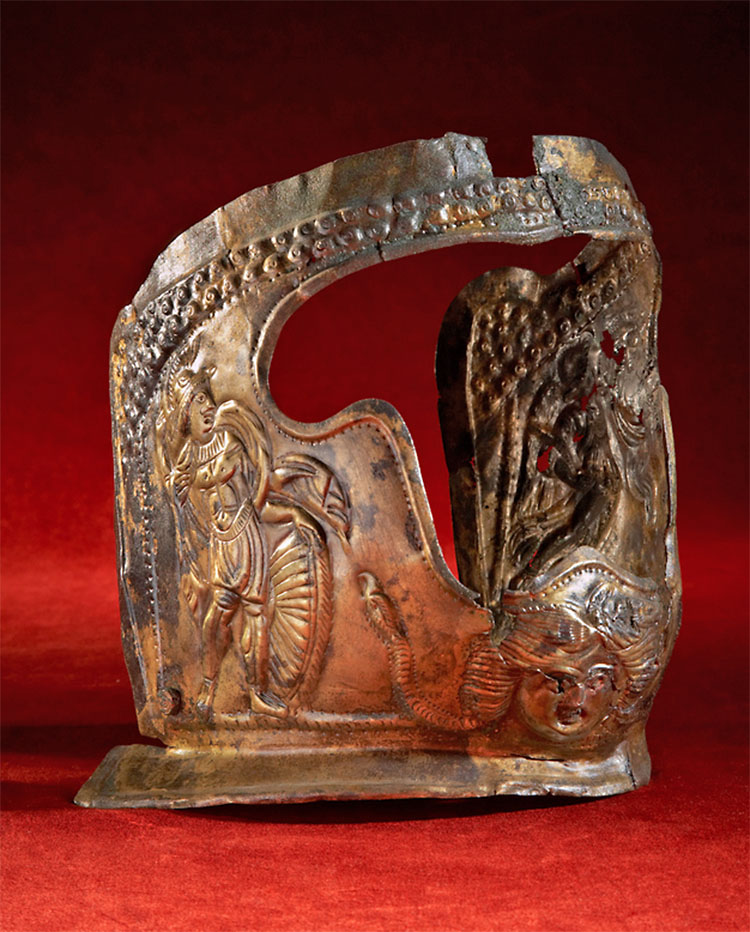This spectacular and rare helmet is
made from a sheet of gilded and beaten copper alloy.
It dates from the early 3rd century AD, possibly
coming from the Danube Valley in Central Europe.
The ornate decoration features an eagle’s head whose
beak forms the crest. Sea dragons are depicted on
either side with curling bodies and three-pronged
tails.
The helmet would have had limited defensive
capabilities and would more likely have been used on
the parade ground rather than the battlefield.
NWHCM: 1947.152 © Norfolk Museums Service

Roman gilding-metal visor mask from a cavalry
parade, or sports, helmet, 3rd century AD, made from
sheet metal with repoussé decoration. O
n the right side, Mars is
shown holding a shield,
on the left
side, a winged Victory holding up a
wreath. O
n the chin
guard there is the head of Medusa with
snakes to either side and,
around the
top, bands of embossed ring-and-dot
decoration. At the bottom
there is a neck flange with
a small rim
.
NWHCM: 1950.205 © Norfolk Museums Service
How the helmet was found
Frederick and Rosa
(née
Middleton) Rivett owned Riverside Farm
on Swanton Morley Road and built the
bungalow Hillside for their daughter Lucy.
The Rivetts also had a son Henry, the father of Sue
Syrett. It was Sue who provided the names of the
cousins who had been at Riverside Farm when the
helmet was found in August 1947. One was Clare
Russell, who remembers that she was about nine years
old at the time. The children spent many hours at
the farm and watched the dredgers working in the
river with great interest, gathering up any
artefact, however small. She remembers the helmet
coming out of the river hanging on the hooks of the
dredger bucket. They had no idea what it was but
played with it, running about in the farmyard
wearing it. Rosa thought it warranted further
explanation and contacted the Castle Museum,
Norwich, who sent an expert to look at it. Wanting
the helmet to stay in Norfolk,
Rosa declined all offers of
purchase and very generously donated it to the
Castle Museum.
In November 1950 further dredging brought to light
the visor from the helmet. Rosa immediately realised
its connection with the earlier find and generously
donated it to the Museum as well.
The river also yielded up some Roman iron shackles
including a barrel lock, as well as oak piles which
may have formed part of a bridge.